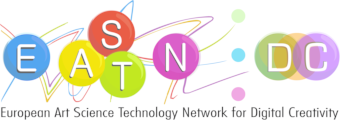SUMMARY
In this research, votive offerings to the Nymphs are studied as mythical media artefacts materializing transcendental communication between suppliants and Nymphs. Trans-disciplinary theoretical/practical methods are adopted, and material transcription gestures utilizing mixed media and low/ high technological means are performed. The study is concluded with the design of new material ecologies as new votive offerings, through which is highlighted the creative value of the mediating function itself.
EXTENDED SUMMARY
OBJECTIVE
The present study is a theoretical/ practical and trans-disciplinary analysis of votive offerings dedicated to the Nymphs, mythical deities, through which the normative terms and reductive assumptions of usual archaeological analysis, proposing them as objects with representational and symbolic function, and only, are criticized and re-examined. This gesture is a proposition of a different epistemological model of thinking and viewing the material world; a world in which representation/reality, natural/artificial, signifier/signified and subject/object dualities are approached as metaphysical constructs.
According to this argument, it is promoted votive offerings mediating function, proposing them as media artefacts, which perform as mediators in the transcendental communication networks between suppliants and Nymphs inside the cave shrines. According to ANT (Actor-Network Theory) of B. Latour(2005), every human or non-human actor is an ontologically equal knot on affecting the others participating in communication networks and material exchanges. Based on this ontological proposition, in the exact moment of the artefact deposition gesture, the suppliants are perpetually re-embodied in votive offerings; henceforward, they are in a new existential condition; they are inner parts of the material ecology of the cave shrine.
Lastly, this gesture is an attempt to extend the boundaries of comprehension of the mediation itself, through the study of material flows between suppliants and Nymphs mediated by votive offerings.
METHODOLOGY
Continuous feedback loops from theory to practice and vice versa are adopted during the research/ design gesture, according to which it is proposed a conceptual/ non-conceptual framework that extends the conditions of dealing votive offerings as media artefacts and suppliants' new embodiments.
Conceptual tools from different, and sometimes, opposing media and communication theories, are eclectically adopted towards the unknown, the unexpected; without any prejudice in favor of rational and scientific reasoning; without any prejudice against intuition, empirical assumptions, aesthetic taste and phenomenological propositions.
The concept of votive offerings dedicated to the Nymphs, as mythical media artefacts is examined mainly, through V. Flusser's media ontology in which the concept of media is massively expanded (Finger, A., Guldin, R., etc, 2011), in order to include every object/ entity that mediates between human and non-human agents, in contrast with classical definitions of media, like M. McLuhan's(1994) concept of media as tools of human body extension or F. Kittler's technological determinism.
After framing the conceptual toolkit, votive offerings transcription gestures are proposed utilizing mixed media; from philosophical/ theoretical frameworks to low/ high technological means, like casting methods, painting techniques, 3d printing, photogrammetry and digital material simulations. Specifically, are used 3d photogrammetry models of selected votive offerings, as molds, which are manipulated digitally and then 3d printed. Material strata from different organic/anorganic materials, that were used as colour pigments on ancient greek and byzantine painting, like cinnabar, iron oxide, calcium carbonate etc are added continually inside the molds. Collagen in the st,ate of aggregates is added as substratum, sizing and pigment preservative medium, behaving as gelatin bio-material. Under the addition of water the molecular catalysis of collagen is achieved and the aggregates are converted to paste acquiring adhesive properties(hydrogen bonds).
By these material transcription gestures new information is added, within each loop of material deposition. Each colour and shape convention is transformed to a material assemblage by which the mediating processes are discernible(Fig.1,2).
CONCLUSION
The result of the research is a set of new material assemblages, new votive offerings(Fig.3,4), with a different mediation function. They are now becoming objects of commemoration of human existential desire for communication, information preservation and inscription on his/her environment. Human agents materialize this desire by neg-entropic gesturing, i.e., by designing media artefacts and participating in material ecologies.
The new votive offerings, as the new suppliants' embodiments, have unique material and aesthetical qualities, by which is given prominence to the agency of the materials themselves in the mediation process, as well as the creational value of the mediation itself, i.e., the transcription gestures process. In each such process, there are traces of the previous one, engraved as ontologically equal, complementary re-presentations of beings.
Back
“Reflections: Bridges between Technology and Culture, Physical and Virtual”
is supported by:






